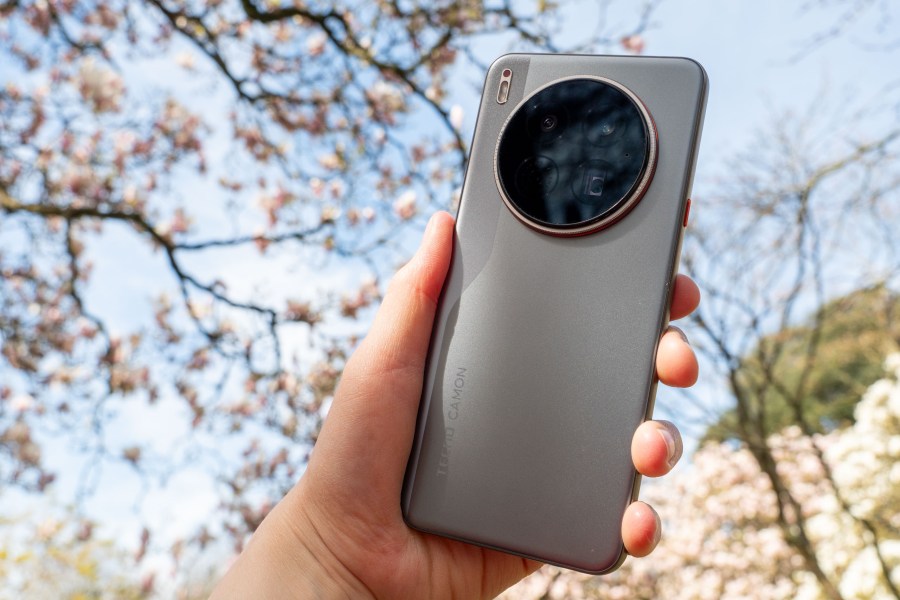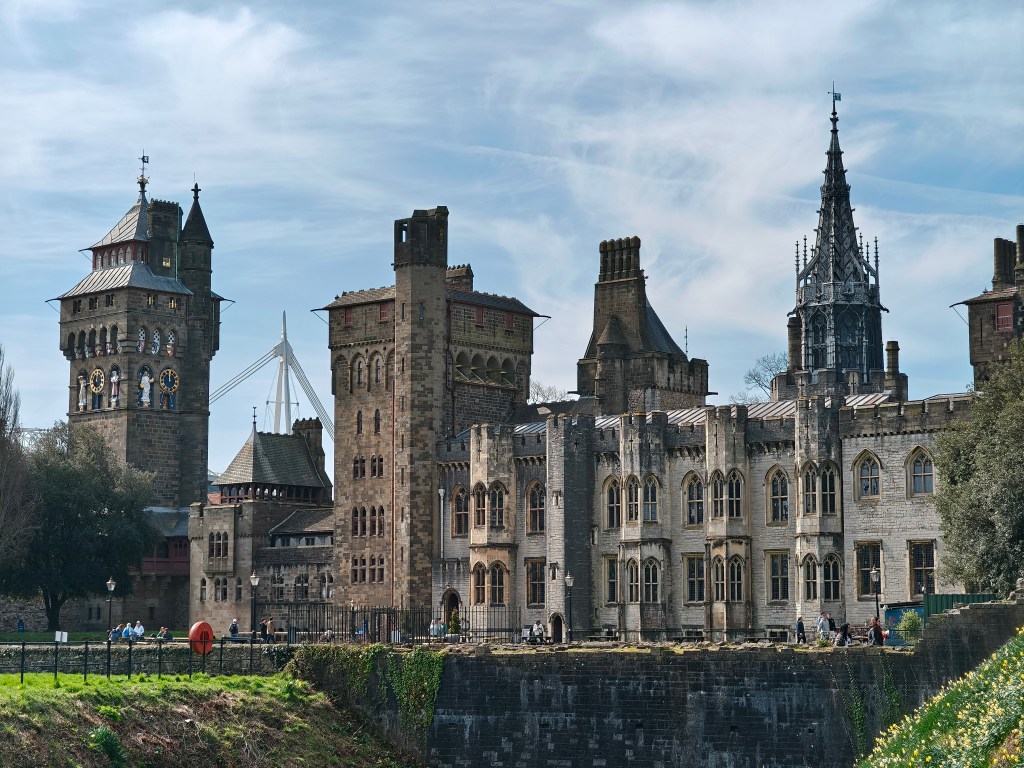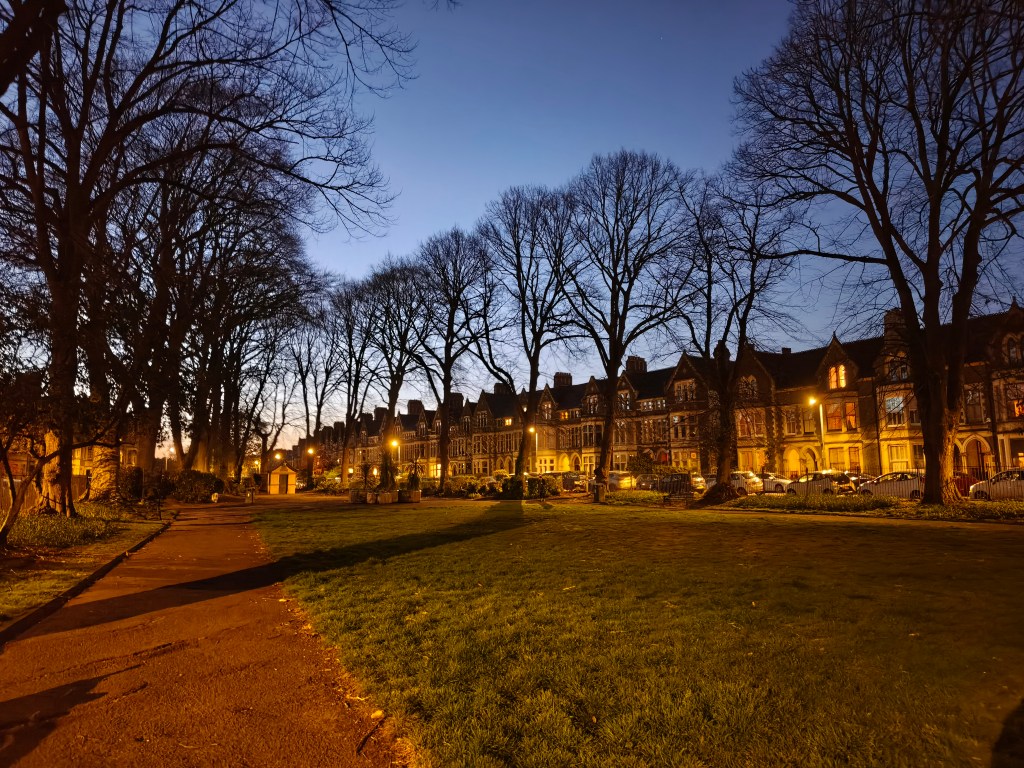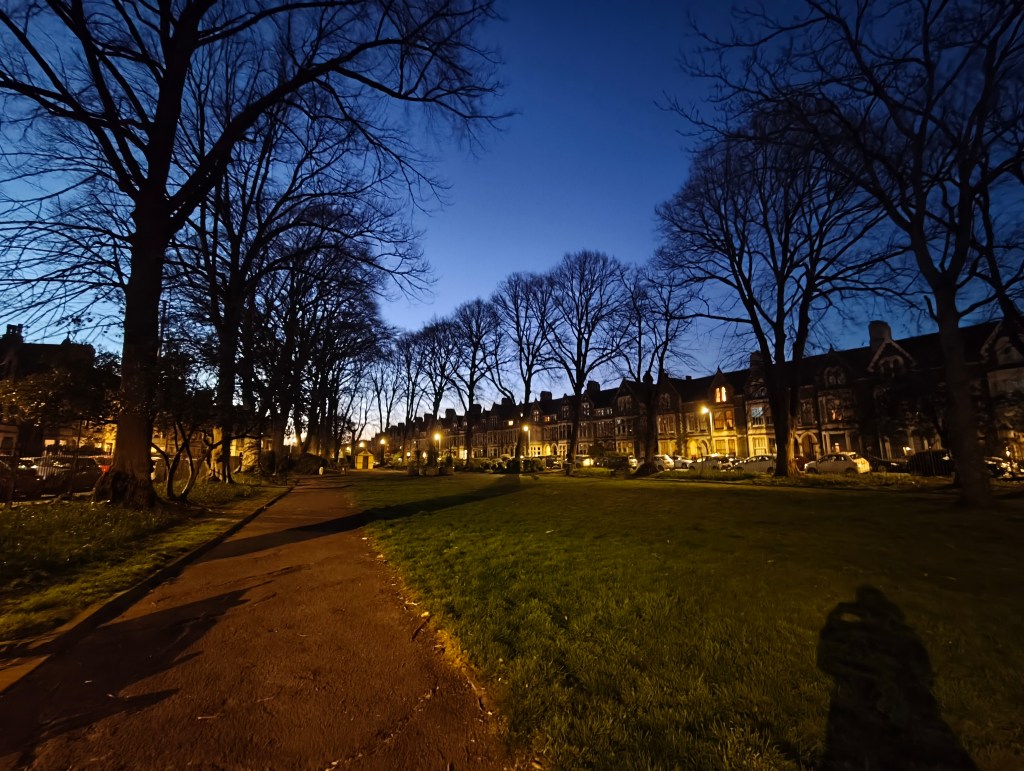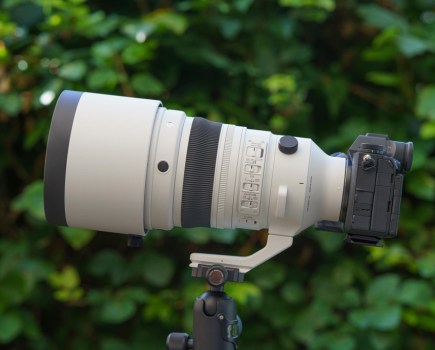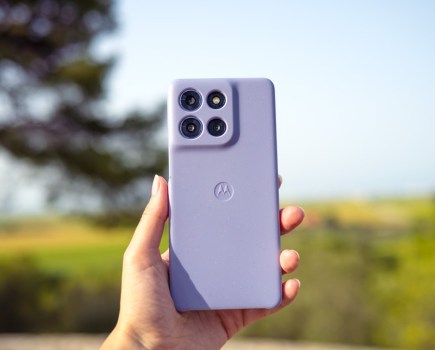Amateur Photographer verdict
The Tecno Camon 40 Premier takes great pictures and is very well-priced. The only big downside is its lack of availability in every market.- Excellent price
- Photo colours have been improved
- 3x 50MP main sensors
- 50MP selfie camera
- Relatively minor upgrade
- Not available in every market
- Portrait subjects not always outlined well
Tecno has been producing some great-value smartphones for a little while now, while also aiming not to skimp on image quality. We were impressed by its predecessor, but will the Tecno Camon 40 Premier make it to our list of the best camera phones for photography? Read on to find out.
The Chinese smartphone brand primarily aims its devices at emerging markets, such as Asia, Africa and Latin America. Its availability is limited in other locations such as the UK and US, but it produces very impressive devices at reasonable prices. Sitting at the top of the latest Tecno Camon line-up, the 40 Premier 5G is also joined by the Tecno Camon 40 Pro 5G and the Tecno Camon 40 5G, all available at a range of different price points to suit a variety of budgets.
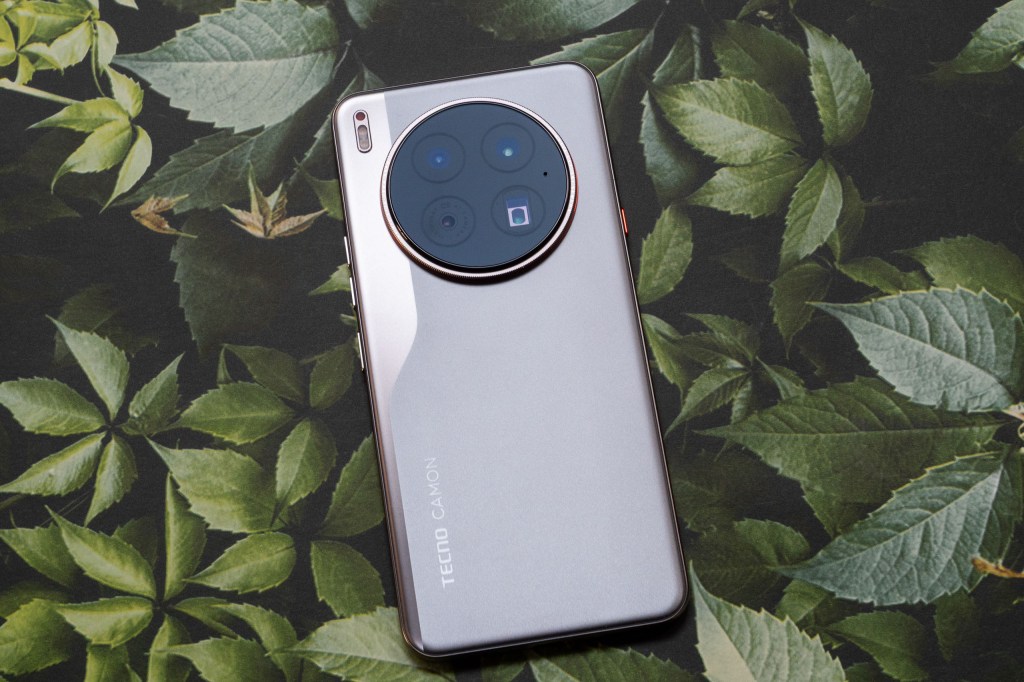
Tecno Camon 40 Premier At A Glance
- 50MP f/1.8, 23mm (1x) equivalent camera, 1/1.56” sensor, PDAF, OIS
- 50MP f/2.0, 14mm (ultrawide) equivalent camera, 1/2.76” sensor, PDAF
- 50MP f/2.4, 70mm (periscope 3x telephoto) equivalent camera, 1/2.76” sensor, PDAF
- 50MP f/2.5, 24mm equivalent selfie camera, PDAF
- 4K at up to 60fps
- 6.67-inch, LTPO AMOLED display, 460ppi, 2800×1260 pixels, Corning Gorilla Glass 7i, 1600 nits max brightness
- 5100mAh battery, fast charging (no wireless charging)
- Android 15
- MediaTek Dimensity 8350 Processor
Although the on-paper specs list for this model are pretty impressive, it’s not a big upgrade compared to its predecessor. Some differences have been made to the screen and body design, but the camera setup appears to be identical to be before. That’s not necessarily a bad thing – all three of the back sensors are 50MP, and there’s also a 50MP selfie camera with AF, a fantastic setup for the price. We’ll see how they perform soon enough – as well as looking to see if there are any software differences which may have changed since the Camon 30 Premier.
Prices for this phone vary around the world, depending on the market you’re in – and in fact at the time of writing, prices have yet to be announced. Whatever the price is, it’ll likely be under $600/£470 (equivalent) – for a flagship this is incredibly well priced.
How we test camera phones
We review smartphones from the perspective of choosing one for its photography and camera performance. We look at what the Tecno Camon 40 Premier offers, and the features included for photography and video, paying particularly attention to the cameras on the phone, photo editing capabilities, as well as the output from each different lens. We consider other aspects too, such as the screen quality and battery life.
Tecno Camon 40 Premier: Features
As mentioned, there’s not a huge amount of difference between the Tecno 40 Premier and its predecessor, the Tecno 30 Premier. That’s perhaps not surprising considering it was pretty well-featured in the first place, but if you do already have one of the older models, you might not find too much here to upgrade to.
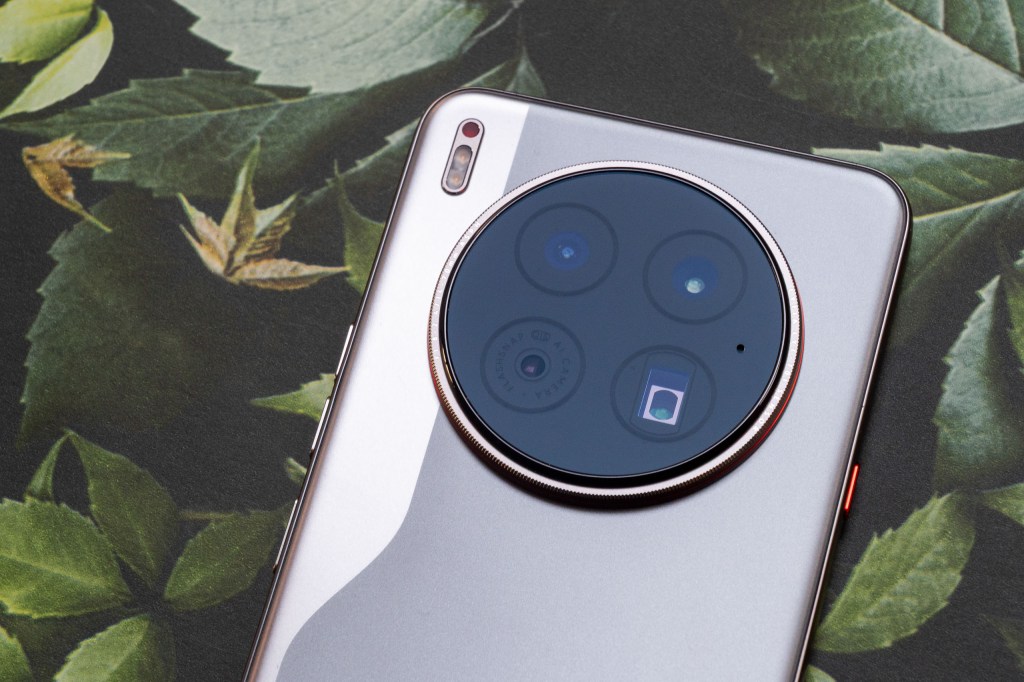
The triple camera array seems to be the same as before. That means you get an impressive three high resolution sensors, each with 50 megapixels. There’s a 23mm f/1.9 equivalent as the main camera, with a 14mm f/2.2 ultrawide and a 3x / 70mm f/2.2 periscope lens joining it. Only the main sensor has OIS (optical image stabilisation), which is a 1/1.56” device. The other two sensors are smaller 1/2.76” devices.
Also good news is that there’s a 50MP selfie camera, which has AF (autofocus) – a relative rarity for even high-end expensive smartphones.
You can use both the ultrawide and the telescope lens for shooting macro images, with the ultrawide allowing you to get almost on top of the subject, and the telephoto being used when you need to keep a bigger difference.
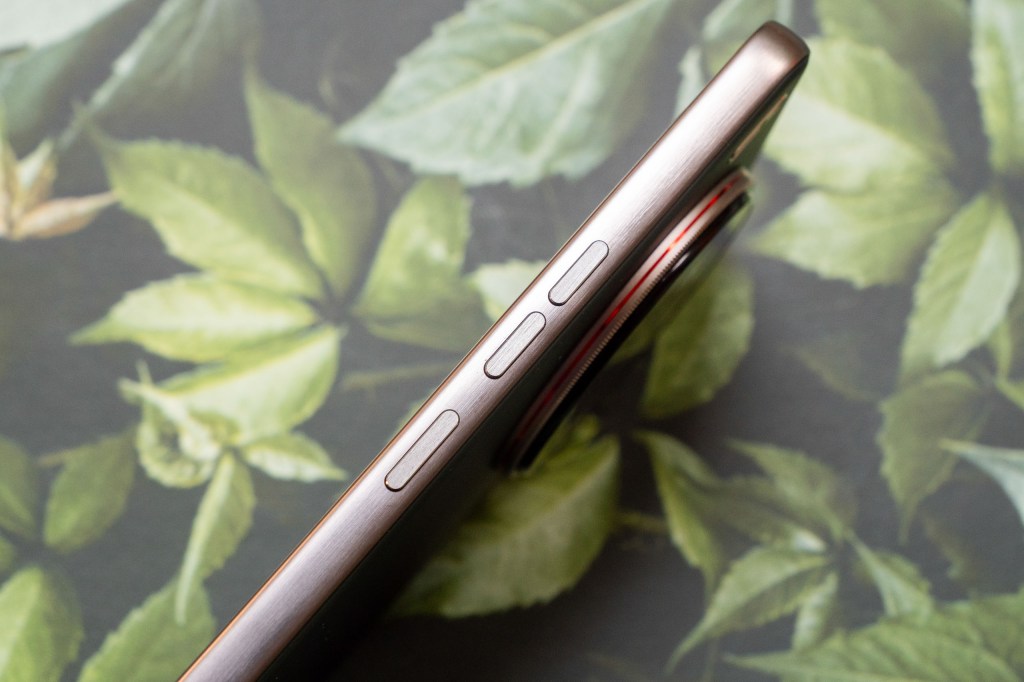
Most of the new features of this phone come from the screen and body design. It’s now slightly smaller and slimmer. More interestingly it also now has IP68/IP69 waterproofing and uses Corning Gorilla Glass 7i, so it should be a lot tougher than the predecessor – which only featured IP54 dust and water resistance, and had Corning Gorilla Glass 5.
Other features of note include 4K video recording at 60fps and a 5100mAh battery with fast (but not wireless) charging. The phone comes equipped with Android 15, with Tecno promising to support at least three major Android upgrades.
Tecno Camon 40 Premier: Handling and Design
The size of the 40 Premier has changed ever so slightly compared to the older model, and also has a slightly reduced screen size at 6.67-inches (compared to 6.77-inches). It’s not something you’re likely to notice in everyday usage, and is still a good compromise between having a large screen to view your photos and actually be usable in other everyday situations.
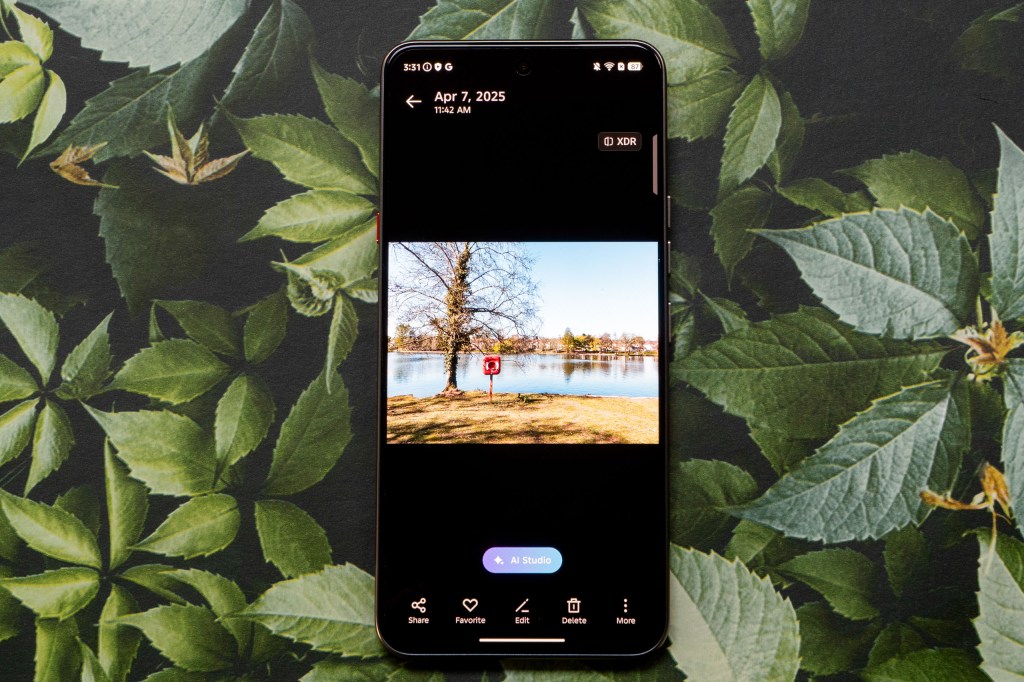
It’s ever so slightly brighter now, at 1600 nits, and has a slightly higher refresh rate at 144Hz too. The biggest improvement – and one you might actually notice – is the IP68/69 water and dustproofing. Tecno says it has been tested to withstand high pressure water jets and is now immersible at up to 2 metres for 30 minutes. When you compare this to the water and dust resistance of IP54 offered by the Premier 30 – essentially only protecting you against water splashes – this might be something to consider upgrading for alone.
There’s also now Corning Gorilla Glass 7i, which has been tested to withstand dorps from up to 1 metre onto a hard (asphalt) surface without causing damage. It’s also claimed to have double the scratch resistance compared to other similarly specced phones on the market.
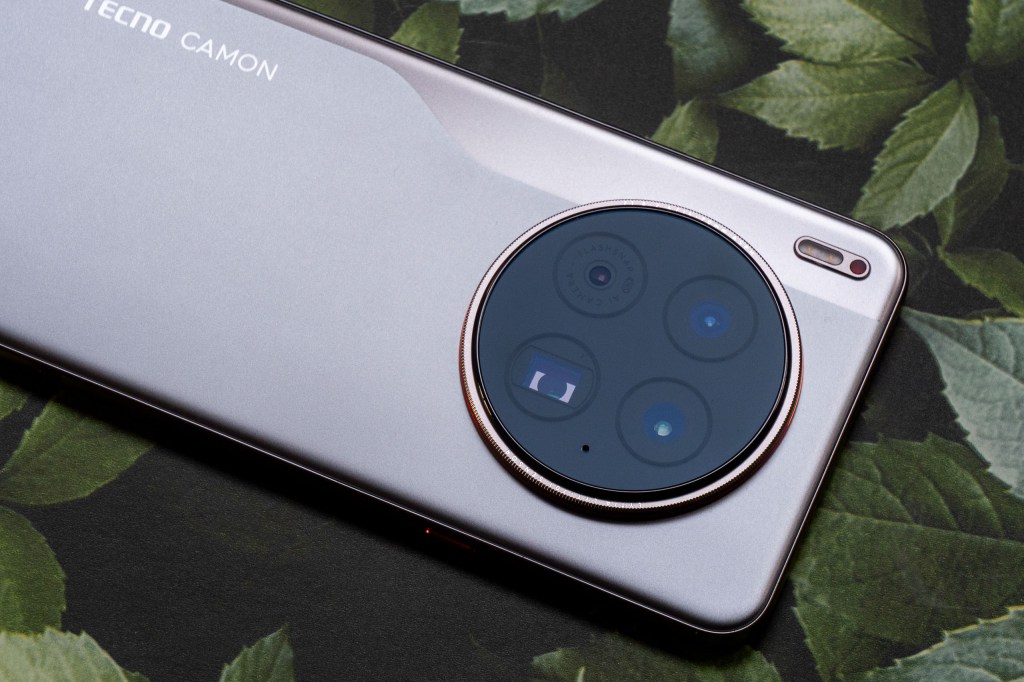
Aesthetically, the 40 Premier is fairly similar to the 30 Premier, albeit with some striking new colour options. I’ve been using the “Galaxy Black” colourway, but the “Emerald Lake Green” looks particularly striking. Once again, we’ve got a ring surrounding the circular camera unit on the back of the phone, which appears to be cosmetic purposes but gives it a retro camera vibe – last year Tecno said that the ring helped with heat dissipation, so we can probably assume the same here.
Tecno Camon 40 Premier: Native Camera App
There’s a good variety of different shooting modes you can use with the native camera app for the Camon 40 Premier 5G, giving you lots of scope to experiment with different styles.
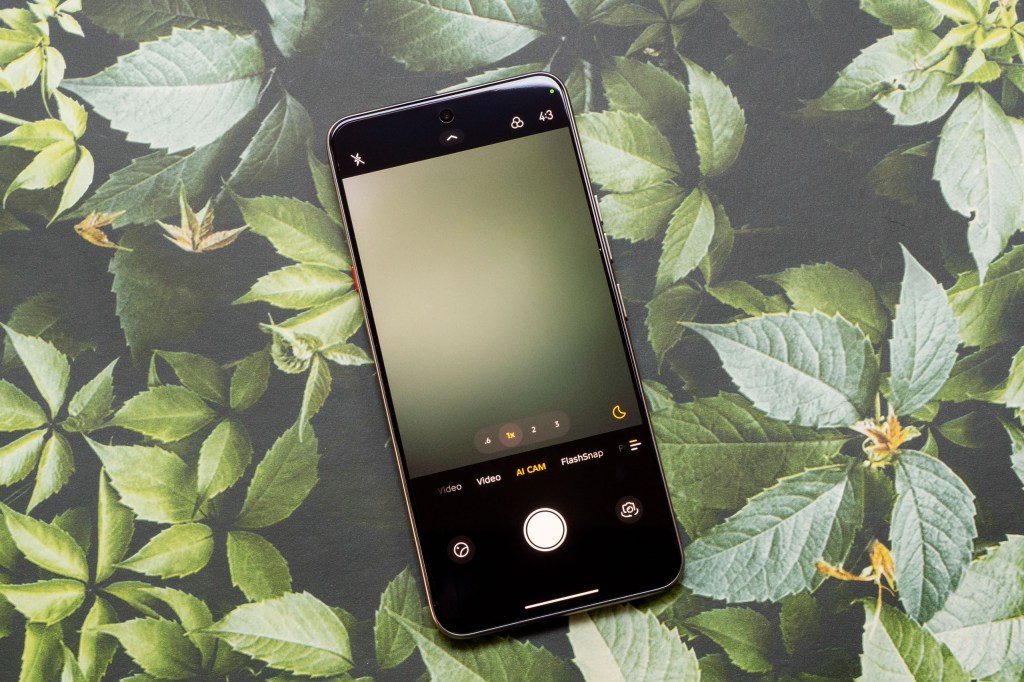
The default shooting mode is “AI Cam” which you can use for everyday usage. There is the option to make some settings changes here, such as using different colour modes/filters, changing the aspect ratio and switching on/off HDR shooting. Further settings changes can be made by swiping up from the main screen and tapping the Settings icon.
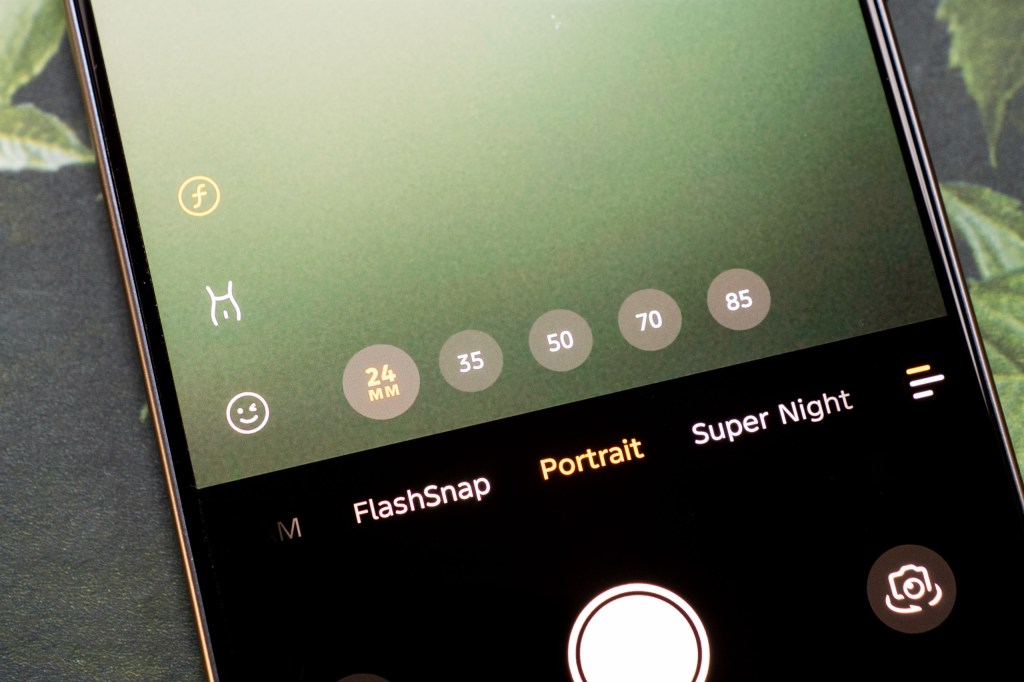
If you’re shooting in low light, you should find that a Night mode automatically activates, but if not there is also a “SuperNight” option you can select manually too. A Portrait mode gives you the option to shoot at a variety of focal lengths, comprising 24, 35, 50, 70 and 85mm – a slight departure from the last model which used a simpler 1x, 2x or 3x option. There’s the option to adjust the simulated bokeh (from f/1.0 up to f/16), as well as some questionable “retouching” options, including the ability to slim or reshape bodies. Interestingly, and thankfully, the ability to adjust a person’s skin tone seems to have been removed, though. I tend to leave all of these options off – not only do I disagree with them in principle, the results are plasticky and unrealistic anyway.
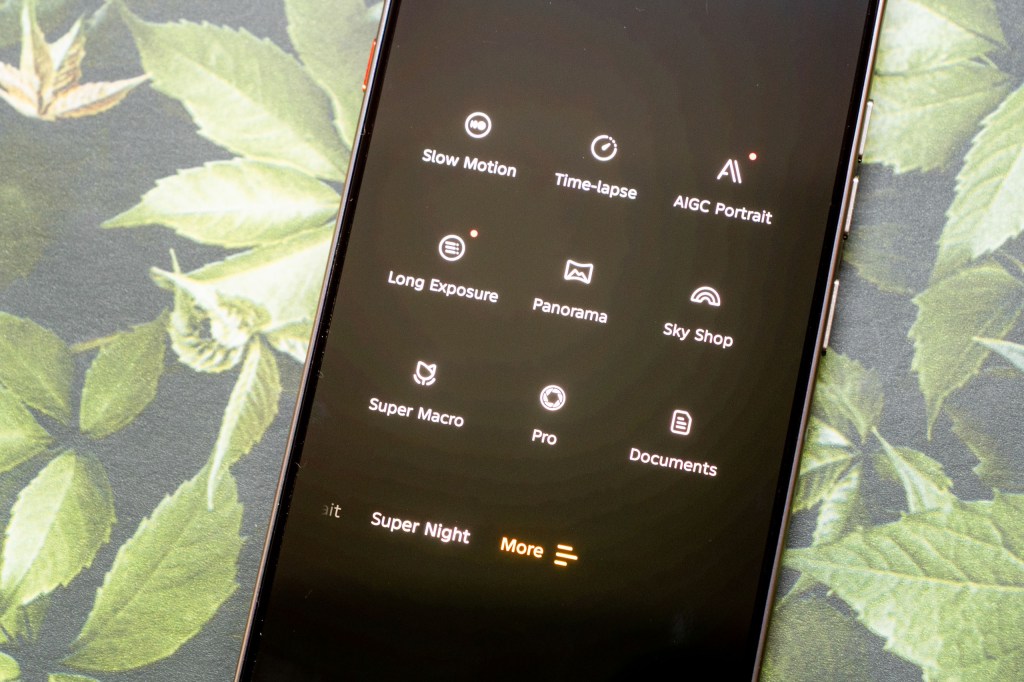
There’s a selection of other shooting modes available under a “More” tab including Super Macro, Panorama and the Pro mode. With the latter, you can adjust a number of settings such as ISO, AF, exposure compensation and so on.
Additionally, there’s also some AI options, for example a “Sky Shop” which allows you to superimpose weather conditions that didn’t happen, or AIGC Portrait which creates an AI rendering of yourself after you take a selfie. These can be fun to experiment with – but the novelty of them wears off after a couple of tries.
A new shooting mode for this model is “Flashsnap”, which can be launched directly from the screen being off by double tapping a button on the side of the phone. It can then shoot 10 shots in 5 seconds. It’s designed to capture fast subjects and can be useful even for everyday scenarios, such as photographing your kids and pets.
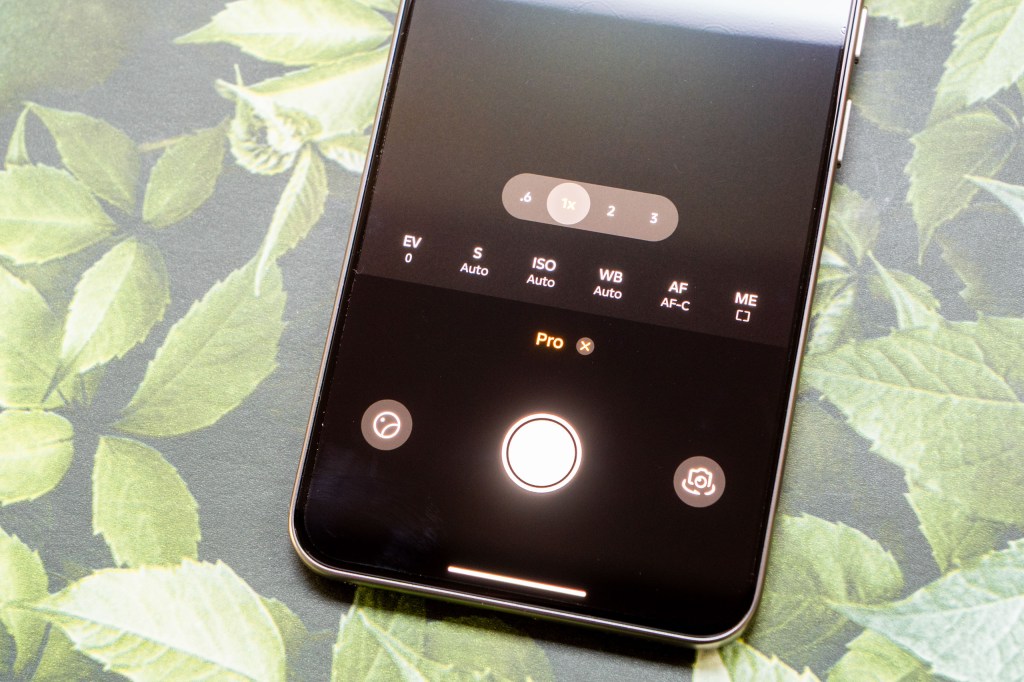
As is pretty common these days, a swathe of AI Editing tools can be used on your photos, including options such as AI Eraser, for getting rid of distractions, or AI Image Extender for creating the impression of using a wider angle than you did in reality. In use, both of these are reasonably good providing the original photo is fairly simple and not too complex, and, you don’t study the results too carefully or on a large screen.
Tecno Camon 40 Premier: Image Quality and Performance

As the Camon 40 Premier’s setup appears to be the same as the Camon 30 Premier, I wasn’t expecting any big surprises when it came to image quality. One gripe I had last year was the camera’s propensity to ramp up colours to dazzlingly vibrant and unrealistic colours, and I’m pleased to say I haven’t been able to recreate that this time, despite enjoying some similarly sunny conditions which I was shooting in. It’s likely – or at least possible – that Tecno has tweaked its algorithms to create more realistic colours when using the AI Camera now.
Expectedly, the main sensor produces the best images, but you can get good results from all three lenses, particularly in good light. The digital zoom options are reasonable up to around 10x, but beyond that, there’s a lot of loss of detail and smudginess, so I’d only really use those if desperate.


Macro mode does a good job of getting you close to a subject for some nicely detailed shots. The SuperMacro is also worth experimenting with, as it uses the telephoto camera, though it can be guilty of oversharpening the results if you’re looking at them closely.

The Portrait mode creates some pleasing results, with nicely blurred backgrounds. It’s not perfect around hair and so on, but so long as you don’t scrutinise the results too closely it’s not too bad. Even with everything set to Off, you can get some slightly plasticky results, which is less than ideal – but it does seem to have been reduced somewhat when compared to the 30 Premier’s Portrait mode. Skin tones are rendered well, with Tecno boasting technology which it says helps it to ensure all skin types are accurately portrayed.

I’ve also found that the selfie camera delivers good results, with AF at this price point being a real bonus. Again, make sure to leave off all the weird Portrait effects that are included here for best results – well, unless you like that sort of thing I suppose.
In low light, the automatic Night mode produces some decent results, with the best seen from the 1x lens. The colour rendition can be a little orangey under artificial light, though. The ultrawide lens don’t perform too well, with some very obvious smudging seen in the ultrawide, and a sharpness difficult to achieve with the telephoto lens which doesn’t have any stabilisation included. Still, at this price point, it’s a pretty good result nonetheless.

Tecno Camon 40 Premier: Value for Money
At the time of writing, we don’t have any definitive pricing information for the Tecno Camon 40 Premier. We’ve asked for it, but so far it’s not become available. We can expect it to retail for under $600/£470 (equivalent) however, which puts it in solid mid-range territory. Hopefully, it will even stick close to the 30 Premier’s pricing of $350/£280 (equivalent).

You get an awful lot for your cash, especially when you compare it to much bigger brands. For example, it’s very likely going to be a fair bit cheaper than even Apple’s “value” proposition, the iPhone 16e, while giving you three lenses and a greater variety of shooting modes.
However, there’s one big drawback here – Tecno is only available in certain markets. Right now, Tecno tells us it will be available in Africa, the Middle East, Southeast Asia, Latin America and Central and Eastern Europe. So, bad luck if you’re in the UK, USA or Australia – which is a shame, as these are genuinely good value options which would compete well with the bigger brands in those markets.
Tecno Camon 40 Premier: Verdict
There’s lots to admire about the Camon 40 Premier. For photographers, you get a lot for your cash – with 3x lenses which all perform well across a range of different shooting conditions.
I’ve been very impressed with what the 40 Premier can deliver, with it comparing well to mid-range options which usually cost a fair bit more. It doesn’t quite match the performance of top-level flagships which are over $1000/£1000, but it would of course be unfair to expect that.
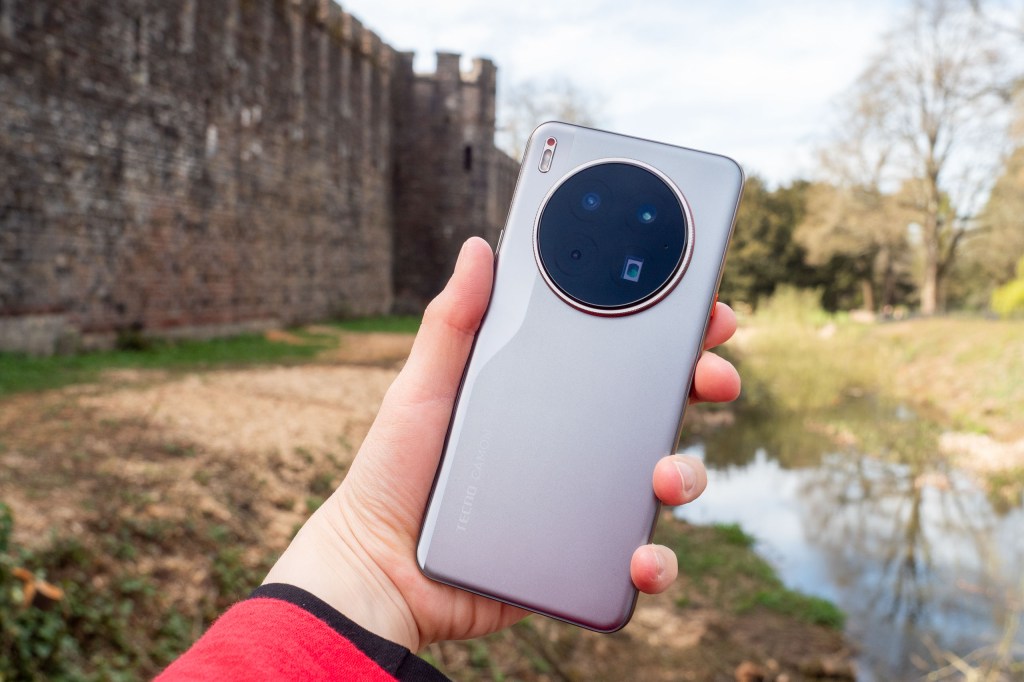
For those without a high budget, it’s a very attractive option, offering a lot more for your money than much bigger brands, like Apple, Samsung and Google.
There’s not been a huge upgrade from the previous model. The cameras seem to be pretty much the same – hardware wise anyway – though it seems that some software improvements have been made, particularly in reference to colours seen in landscapes. Making the 40 Premier more durable than its predecessor is a welcome change though, albeit perhaps not enough to entice anyone who already owns a 30 Premier to invest in a new one (unless of course you broke it by dropping or getting it too wet).
Of course, it not being available in every market is bad news for those who’d like to get their hands on a well-performing device like this at a good price. Perhaps one day, Tecno will expand its territories beyond the emerging markets, but for those who can buy it, it’s a great opportunity to get a well-performing all-rounder at a fair price.


